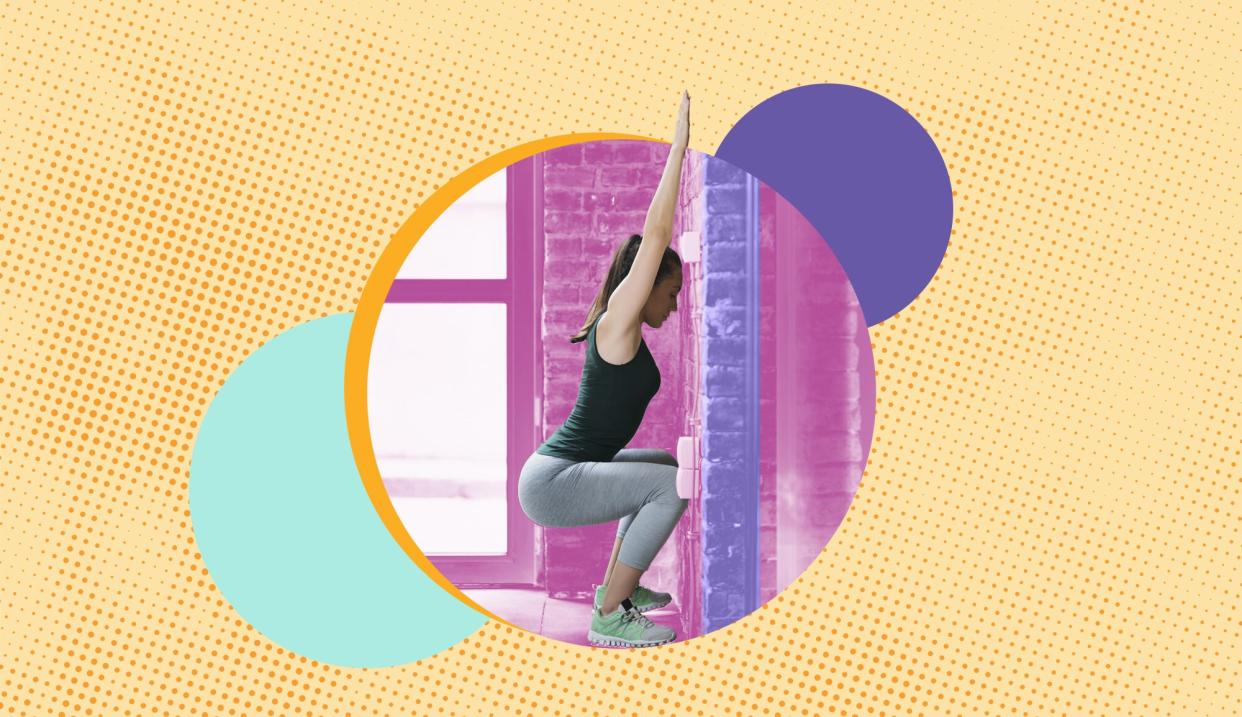The Latest TikTok Mobility Challenge Requires Zero Equipment — But That Doesn't Mean It's Easy

- Oops!Something went wrong.Please try again later.
Getty Images
Who doesn't love a fun TikTok challenge? These days, and there's a seemingly endless supply of new (and sometimes downright wacky) ways to test your strength and flexibility on the low-key addictive app.
The latest challenge going viral on TikTok tests your mobility from head to toe, and it'll have you questioning just how low you can go. It requires zero equipment, can be done in just about any room of your house, and looks super straightforward, but fair warning: This challenge requires pretty remarkable balance, mobility, and strength to nail. Just ask Blogilates founder Cassey Ho and the other brave souls who have given it a go on TikTok. (We're still not over Ho's hybrid Karate/Pilates challenge, by the way.)
Commonly referred to as a "squat therapy" in the CrossFit and weightlifting world, the move involves facing an empty wall, raising your arms overhead, placing your palms flat against the wall, and pointing your toes directly towards the wall in preparation to do a wide-legged squat.
You'll then slooooowly lower your hips into a squat, seeing — of course — just how low you can go with your hands still touching the wall. Paying attention to your form is crucial, as you'll want to ensure your spine remains in a neutral position (no arching your back here!), your knees stay in line with your toes, and your power is coming from the hips and core until your booty reaches its lowest point. Your heels should also remain firmly planted to keep your balance. (If you can't keep your heels down, it could mean you need to work on your ankle mobility.)
Once you've made it to the bottom, you want to keep that same control to bring your bodyweight back up so you don't fall backwards and risk injury. (Note: Your ability to complete the challenge is also dependent on your own individual anatomy and current abilities — if you try it and feel pain, you should stop.)
"I believe this mobility challenge was adapted from a form check for an overhead barbell squat, which is performed in powerlifting and CrossFit," Ho captioned her post explaining the move. "My sister and I actually did a version of this a few months ago where we slowly inched towards the wall — but feet HAD to be totally perpendicular! If I kept my feet perpendicular, I'd TOTALLY FALL. So, this is where I am right now." (Related: 6 Ways You're Squatting Wrong)
As you can see (and as Ho pointed out), the move tests the mobility and strength in your shoulders, hips, and thoracic spine (the middle section of your spine that runs from your upper to lower back). ICYDK, mobility isn't just about flexibility — rather, "it's the ability for the body to effortlessly access all range of motion (ROM, or full movement potential) without pain or compensation," physical therapist Ryan Ardoin, D.P.T., C.S.C.S., previously told Shape. This challenge perfectly tests your mobility because it's not only seeing how low you can go, but also how deep you can move into the range of motion while still engaging all those muscles needed to keep yourself upright in the squat — and rise out of it. (Here's Why You Should Care About Thoracic Spine Mobility)
Practicing this can help you nail proper squat form, as CrossFit pros have long pointed out. "The back squat requires and builds strength, flexibility, mobility, and coordination. But if you're not squatting well, you're only accessing a fraction of your athletic ability," as Dave Lipson, C.S.C.S., a CrossFit Level 4 Trainer and founder of Thundr Bro, an educational fitness platform, previously told Shape.
Squat therapy — and this particular TikTok challenge — is essentially, "the practice of refining the positions of the squat so that it's more mechanically advantageous," he says. "It's something that helps point out the weaknesses in your squat and improve them." Specifically, this move is a great drill for teaching you not to lean too far forward in a regular squat or overhead squat, which is a common compensation, according to the National Academy of Sports Medicine.
Ready to give it a try? Have at it. This squat mobility drill something that you can work on no matter where you are in your fitness journey. But consider checking out more info on squat therapy and how to do a proper back squat here before you take it to TikTok.

